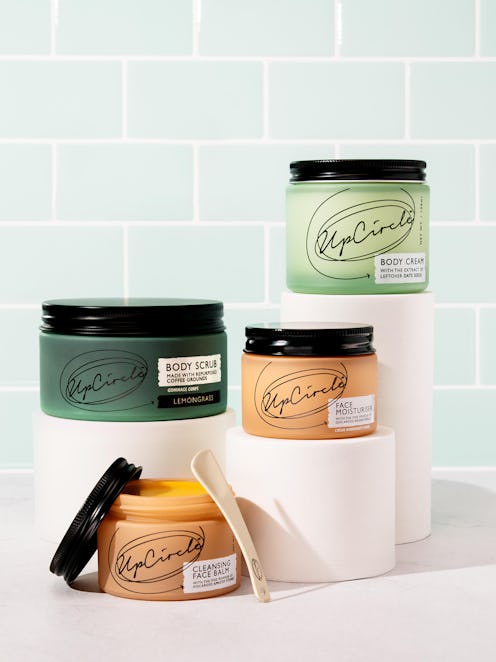Beauty
What You Really Need To Know About "Waterless" Beauty
It’s the latest beauty trend among the eco-conscious.

If you look through the ingredients list of any beauty product, chances are that you’ll spot the word “aqua” at the top of the list. For many years, water has been used as the top ingredient to formulate beauty products, including haircare, skincare, and makeup. And it may seem like an inexpensive ingredient to use, but since 1.8 billion people around the world will live in countries or regions with water scarcity by 2025, the beauty industry, which produces 120 billion units of cosmetic packaging globally, has been coming up with innovative ways to become more eco-friendly.
One such way is offering waterless products. Waterless beauty, otherwise known as anhydrous beauty, is a trend that was birthed out of South Korea in 2015. It refers to products that do not contain water as an ingredient. This innovation began as a way to increase the concentration of active ingredients in products, as the use of water dilutes the efficacy. According to Future Market Insights (FMI), waterless cosmetics sales are set to grow at a rate of 13.3% between 2021 and 2031. Unilever, one of biggest personal care brands in the world, has joined both the 2030 Water Resources Group and the Alliance for Water Stewardship, pledging to implement new projects and initiatives to improve water management in nations suffering.
But it’s the smaller, indie brands like UpCircle Beauty that have truly led the way in promoting the trend of waterless beauty, with many luxury brands following suit as they look to become more sustainable. “As global demand for water increases, waterless beauty is a quick and easy way to reduce water consumption,” says Anna Brightman, co-founder of UpCircle, an ethical beauty brand. “Waterless products often weigh less than their counterparts too, meaning they have a much lower carbon footprint.”
UpCircle Beauty offers a plethora of waterless products, including the Cinnamon and Ginger Chai Soap bar which contains French pink clay. The brand is also launching a shampoo and conditioner paste, which have concentrates that contain much less water than standard haircare products. “But it’s not just the sustainability side of things that makes waterless beauty great, it’s the skin benefits too,” continues Brightman. “Waterless products contain a higher concentration of active ingredients. The absence of water means that preservatives aren’t required, making waterless beauty a great option for those with sensitive skin.”
Going waterless is definitely a step in the right direction for beauty brands, but it’s not a solution for global water scarcity. A brand can never be 100% waterless as product machinery used to produce the product, as well as transportation used to ship them, still require water to run. That’s not to mention that you need water to grow the many ingredients used in beauty products. And, of course, there are many waterless beauty products that need water added to activate them, so the reduction of water also lies on the consumer’s behavioural habits. That said, waterless beauty is still a more sustainable option than those that do contain water, so it’s better to look out for the brands that also have re-fillable options and circular initiatives.
Not sure where to look? Shop some of our favourite waterless beauty products below to get you started.
We only include products that have been independently selected by Bustle's editorial team. However, we may receive a portion of sales if you purchase a product through a link in this article.
This article was originally published on